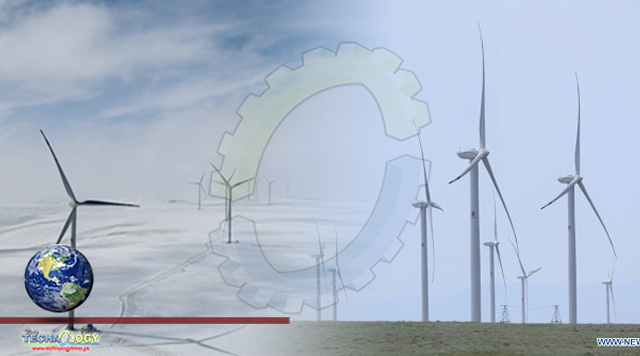A group of scientists at the Massachusetts Institute of Technology (MIT) have created a brand-new kind of turbine that might fundamentally alter how we produce energy.

A group of scientists at the Massachusetts Institute of Technology (MIT) have created a brand-new kind of turbine that might fundamentally alter how we produce energy.
The novel turbine can spin at a considerably faster speed than conventional turbines since it is constructed of a lightweight, flexible material. This increases the amount of energy that can be produced from a given amount of wind or water and improves the efficiency and operating costs of the turbines.
Even though the new turbine technology is still in its infancy, researchers think it has the potential to have a huge impact on the world energy market. If the technology is successful, it might help us rely less on fossil fuels and increase the affordability and accessibility of renewable energy.
Not just MIT academics are working on the development of novel turbine technology. A number of other businesses and academic institutions are also working on developing new ways to produce energy from wind and water. These initiatives are part of a global initiative to discover innovative, greener, more effective, and cheaper energy production methods.
The need for novel and creative ways to produce energy is becoming increasingly urgent as the world’s population keeps expanding and our need for it rises. One of the many innovative new advancements occurring in the realm of energy research is the new turbine technology created by MIT. We may anticipate much more advancement in the years to come with ongoing investment in research and development.
There are numerous more promising advancements in the realm of turbine technology in addition to the MIT research. Researchers at the University of California, Berkeley have developed a novel type of wind turbine that is suitable for use in offshore wind farms, for instance. The new turbines are anticipated to be more effective and less expensive to operate than conventional offshore wind turbines, since they are made to resist the severe conditions of the open ocean.
The utilization of turbines to produce electricity from tidal currents is another innovative development that shows promise. Tidal currents are a potent source of energy and are playing a bigger role in the production of renewable energy. Numerous businesses are creating new turbines that can harness tidal currents to produce electricity.
Modern turbine technology for energy generation
The new type of turbine is known as a “vortex turbine.” It could be more practical to produce sustainable energy in locations with limited wind resources because it is built to function at considerably lower wind speeds than conventional turbines. The vortex turbine can produce more electricity from the same amount of wind than conventional turbines because it is more efficient.
A group of scientists at MIT have created a brand-new kind of turbine that can produce electricity even in the presence of weak winds. The vortex turbine was created using a computer model and is based on the principles of fluid dynamics.
The turbine produced up to 30 percent more electricity from the same amount of wind than conventional turbines, according to tests conducted in a wind tunnel at MIT.
The scientific community has responded favorably to the team’s research, and Dr. Henry, the team’s principal investigator, thinks the vortex turbine has the potential to “change the game” in the clean energy sector.
Wind turbine energy generation
Globally, wind turbines produced 1,870 TWh of energy in 2021, an increase of 17% from 2020. This rise accounted for 5 percent of the world’s electricity production and was the greatest of any renewable energy source. China produced the most wind energy, with 571 TWh, followed by Germany (158 TWh), the United States (273 TWh), and India (119 TWh).
Numerous causes, such as declining costs, more government assistance, and rising environmental concerns, are causing the use of wind energy to increase. As a clean, renewable energy source, wind energy can lower greenhouse gas emissions and enhance air quality.
Globally, wind turbines produced 1,870 TWh of energy in 2021, an increase of 17% from 2020. This rise accounted for 5 percent of the world’s electricity production and was the greatest of any renewable energy source. China produced the most wind energy, with 571 TWh, followed by Germany (158 TWh), the United States (273 TWh), and India (119 TWh).
The Global Wind Energy Council (GWEC) estimates that in 2022, 77.6 GW of additional wind generating capacity will be linked to electricity grids, bringing the total installed wind capacity to 906 GW1, an increase of 9 percent from 2021. Among these, 69 GW were deployed on land and 9 GW offshore.
The top five nations in 2022 for new wind energy capacity were: China 44.4 GW, United States 13.7 GW, India 10.8 GW, Germany 7.8 GW, and Portugal 4.9 GW.
The GWEC predicts that between 2023 and 2026, 557 GW of additional capacity will be built, indicating that the global wind industry will continue to expand. Several causes, such as the rising cost competitiveness of wind power, the need to reduce greenhouse gas emissions, and the expanding emphasis on renewable energy sources, will be responsible for this growth.
The notable development in the field of renewable energy is the creation of the vortex turbine. It has the ability to completely alter how we produce electricity, making it more accessible, economical, and efficient.
The global drive to lessen our dependency on fossil fuels and move towards a future powered by renewable energy includes the development of innovative turbine technology as a key component. We may anticipate much more advancement in the years to come with ongoing investment in research and development.